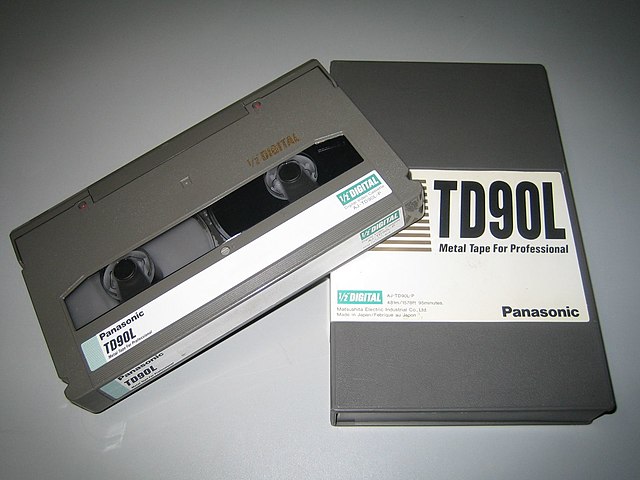D-5 is a professional digital video format introduced by Panasonic at 18th International Television Symposium in Montreux in 1993 and released a year later in 1994. Like Sony's D-1 (8-bit), it is an uncompressed digital component system (10-bit), but uses the same half-inch tapes as Panasonic's digital composite D-3 format. A 120 min. D-3 tape will record 60 min. in D-5/D-5 HD mode. D-5 standard definition (SD) decks can be retrofitted to record high definition with the use of an external HD input/output box/decoder. There were native D5 HD decks as well that didn't need an external processor and could record in both SD and HD. High definition conversion on D5 HD decks does not allow for any error correction that exists on standard definition recordings, as the full bandwidth of the tape is required for high definition recording.
Panasonic D-5 HD VTR AJ-HD3700H
A cassette tape for D-3 and D-5 (Medium)
Digital video is an electronic representation of moving visual images (video) in the form of encoded digital data. This is in contrast to analog video, which represents moving visual images in the form of analog signals. Digital video comprises a series of digital images displayed in rapid succession, usually at 24, 30, or 60 frames per second. Digital video has many advantages such as easy copying, multicasting, sharing and storage.
Sony digital video camera used for recording content.
A Betacam SP camera, originally developed in 1986 by Sony.
A professional television studio set in Chile.
A broadcast television camera at the Pavek Museum in Minnesota.






